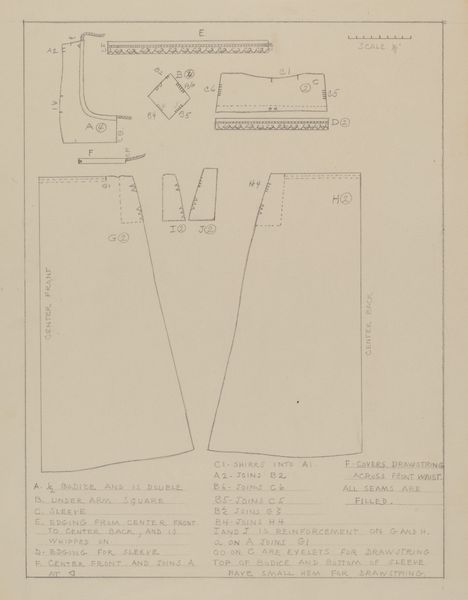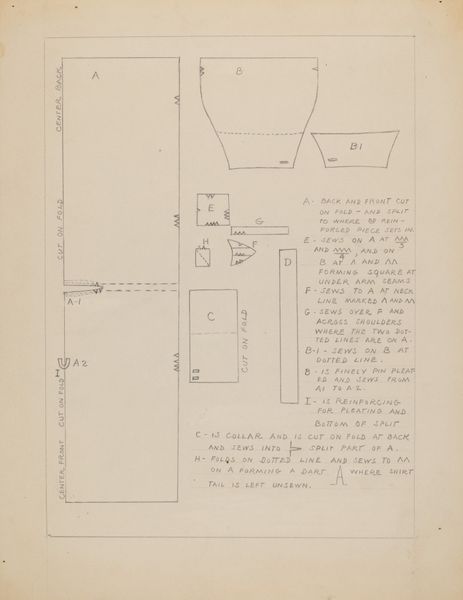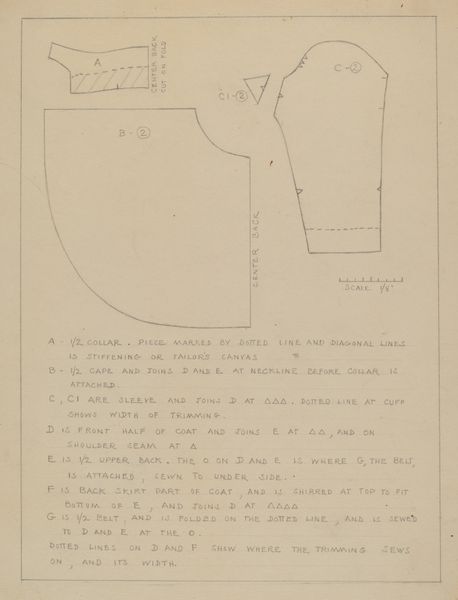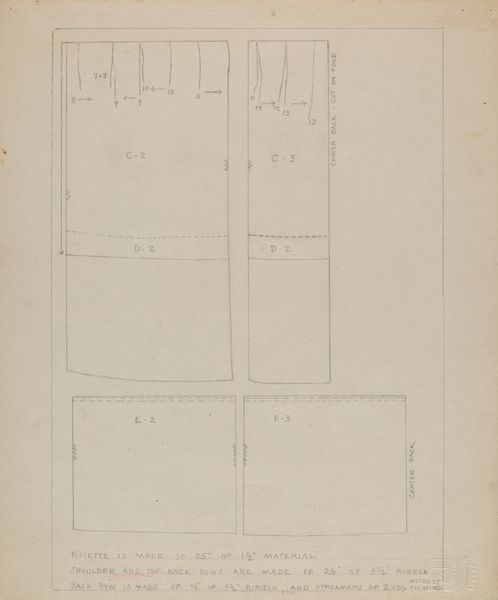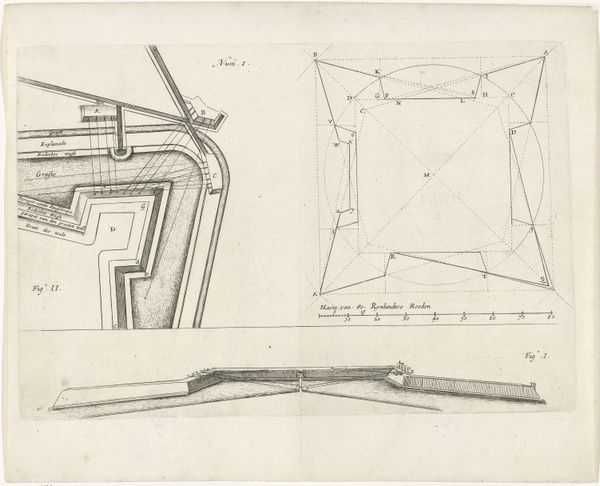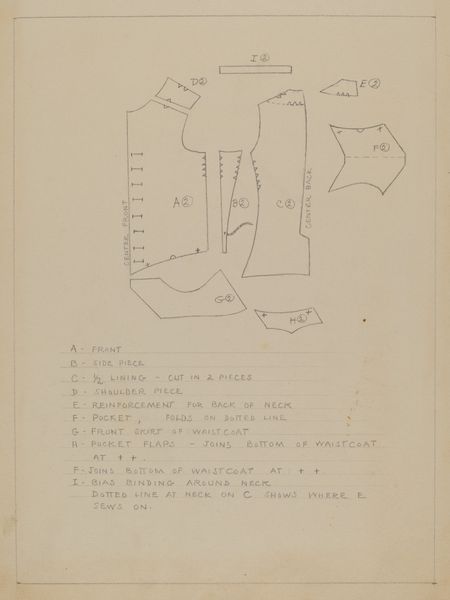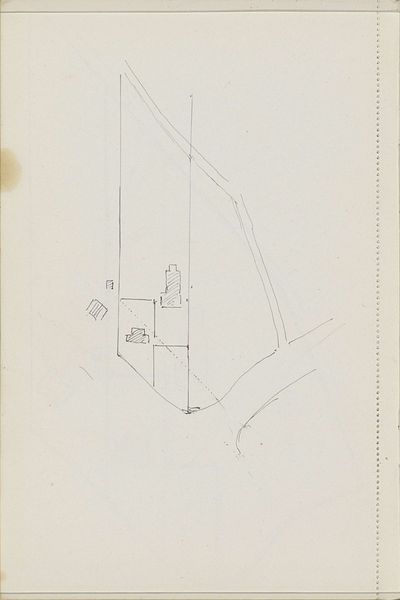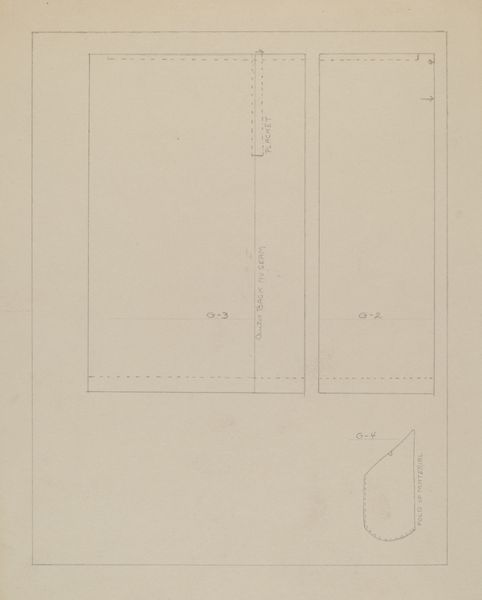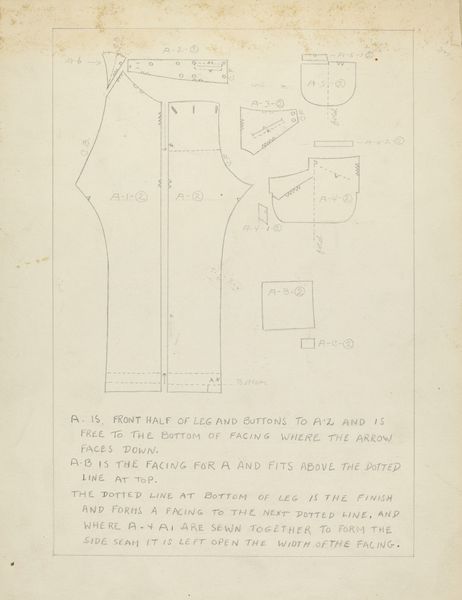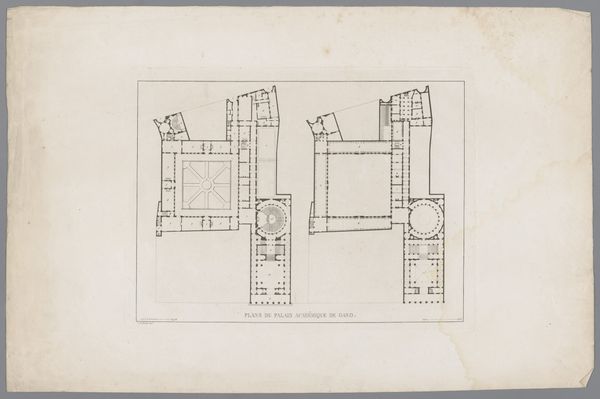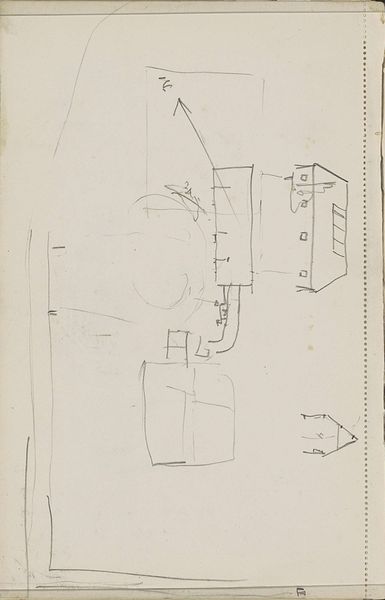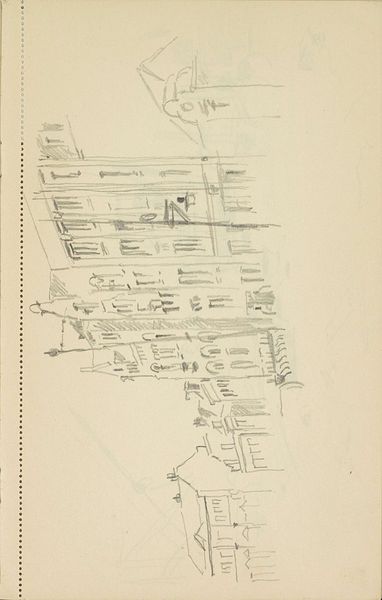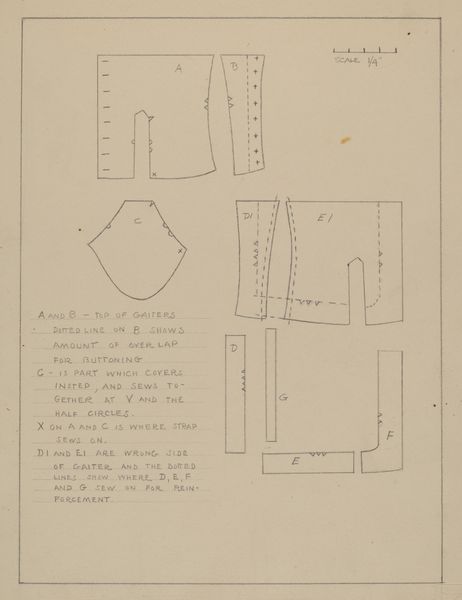
drawing, paper, pencil
#
drawing
#
pattern
#
paper
#
geometric
#
pencil
Dimensions: overall: 29 x 22.5 cm (11 7/16 x 8 7/8 in.)
Copyright: National Gallery of Art: CC0 1.0
Editor: This is "Pattern for Man's Suit," a pencil drawing on paper created around 1938 by Henry De Wolfe. It features geometric shapes and lines. The composition almost appears fragmented, a deconstruction of what could become a tailored garment. What strikes you when you observe the arrangement of these shapes? Curator: Immediately, the precision of line is apparent. Note how each segment, numbered and meticulously rendered, displays an internal logic, an independent geometry. It’s a field of relations –shape to shape – line dictating form, but seemingly liberated from immediate functionality. De Wolfe presents us not with a suit, but with the *idea* of a suit, abstracted and intellectualized. Do you perceive a hierarchy within these forms? Editor: I see how the larger pieces might imply the body of the suit, whereas the smaller shapes could delineate pockets, buttons, or embellishments. Does the presence of the hand-drawn numerals and annotations enhance the piece’s artistic value, or are they merely functional? Curator: Consider that very dichotomy. The intrusion of text, the systematized labeling, can be perceived as graphic interventions. Are they separate from the art? I’d argue against this. These numerical markings become crucial to the formal unity of the piece – lending it a conceptual depth beyond mere representation. Editor: That’s an insightful interpretation; I hadn’t considered how even functional elements could reinforce the visual architecture of a work like this. It reframes the artistic essence away from representation and towards the articulation of its underlying structure. Curator: Precisely. What appears merely utilitarian becomes the very fabric of artistic expression.
Comments
No comments
Be the first to comment and join the conversation on the ultimate creative platform.

